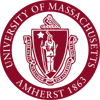Methods and Theory : Deep Funneling
Overview
Unsupervised joint alignment of images has been demonstrated to improve
performance on recognition tasks such as face verification.
Such alignment reduces undesired variability due to factors such as pose,
while only requiring weak supervision in the form of unaligned examples.
However, prior work on unsupervised alignment of complex, real-world
images has required the careful selection of feature representation based
on hand-crafted image descriptors, in order to achieve an appropriate,
smooth optimization landscape.
In this work, we instead propose a novel combination of unsupervised
joint alignment with unsupervised feature learning.
Specifically, we incorporate deep learning into the congealing
alignment framework. Through deep learning, we obtain features that can
represent the image at differing resolutions based on network depth, and
that are tuned to the statistics of the specific data being aligned.
In addition, we modify the learning algorithm for the restricted
Boltzmann machine by incorporating a group sparsity penalty, leading
to a topographic organization of the learned filters and improving
subsequent alignment results.
We apply our method to the Labeled Faces in the Wild database (LFW).
Using the aligned images produced by our proposed unsupervised algorithm,
we achieve higher accuracy in face verification compared to prior work in
both unsupervised and supervised alignment.
We also match the accuracy for the best available commercial method.
Faculty
Graduate Students
Collaborators
Publications
- Gary B. Huang, Marwan A. Mattar, Honglak Lee, and Erik Learned-Miller.
Learning to align from scratch.
Neural Information Processing Systems (NIPS), 2012.
[pdf]
